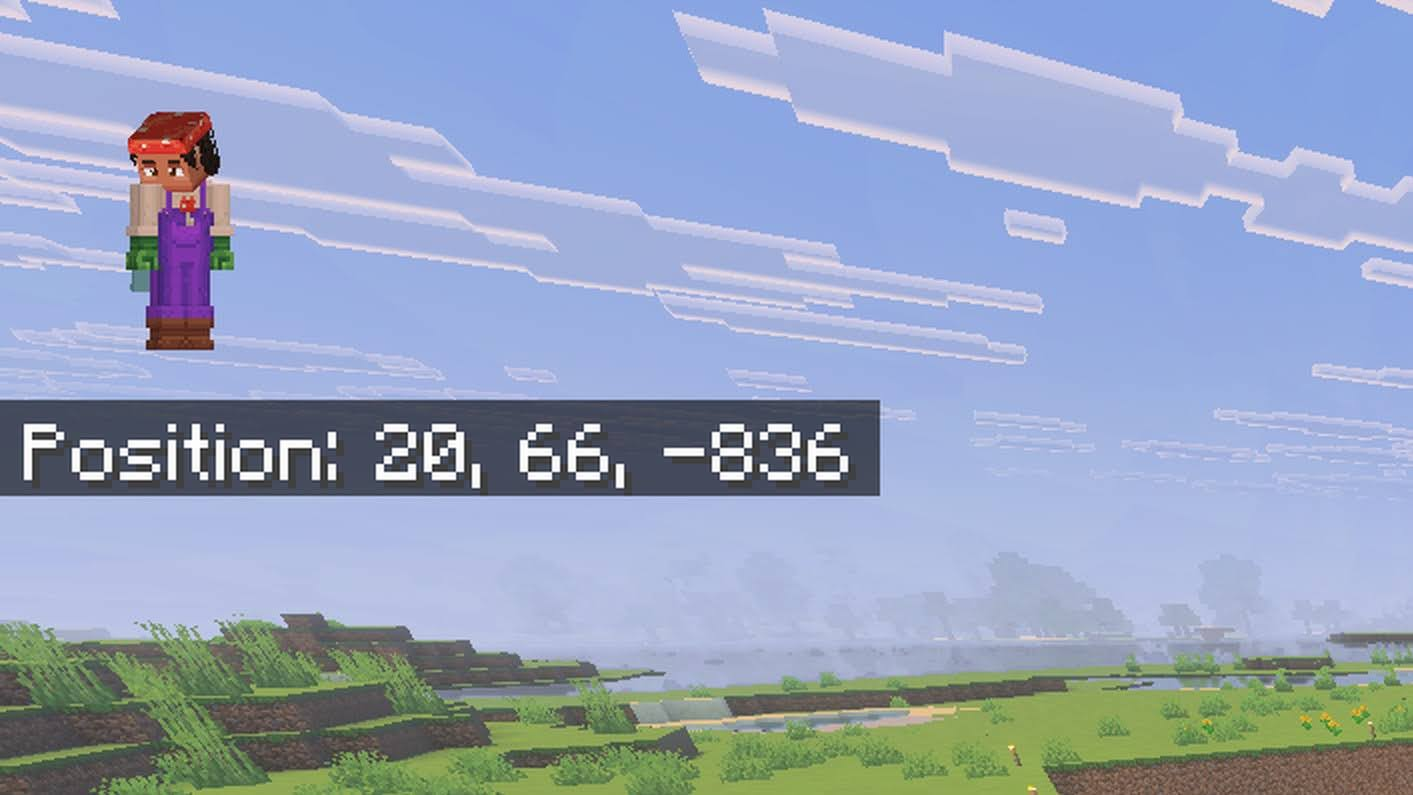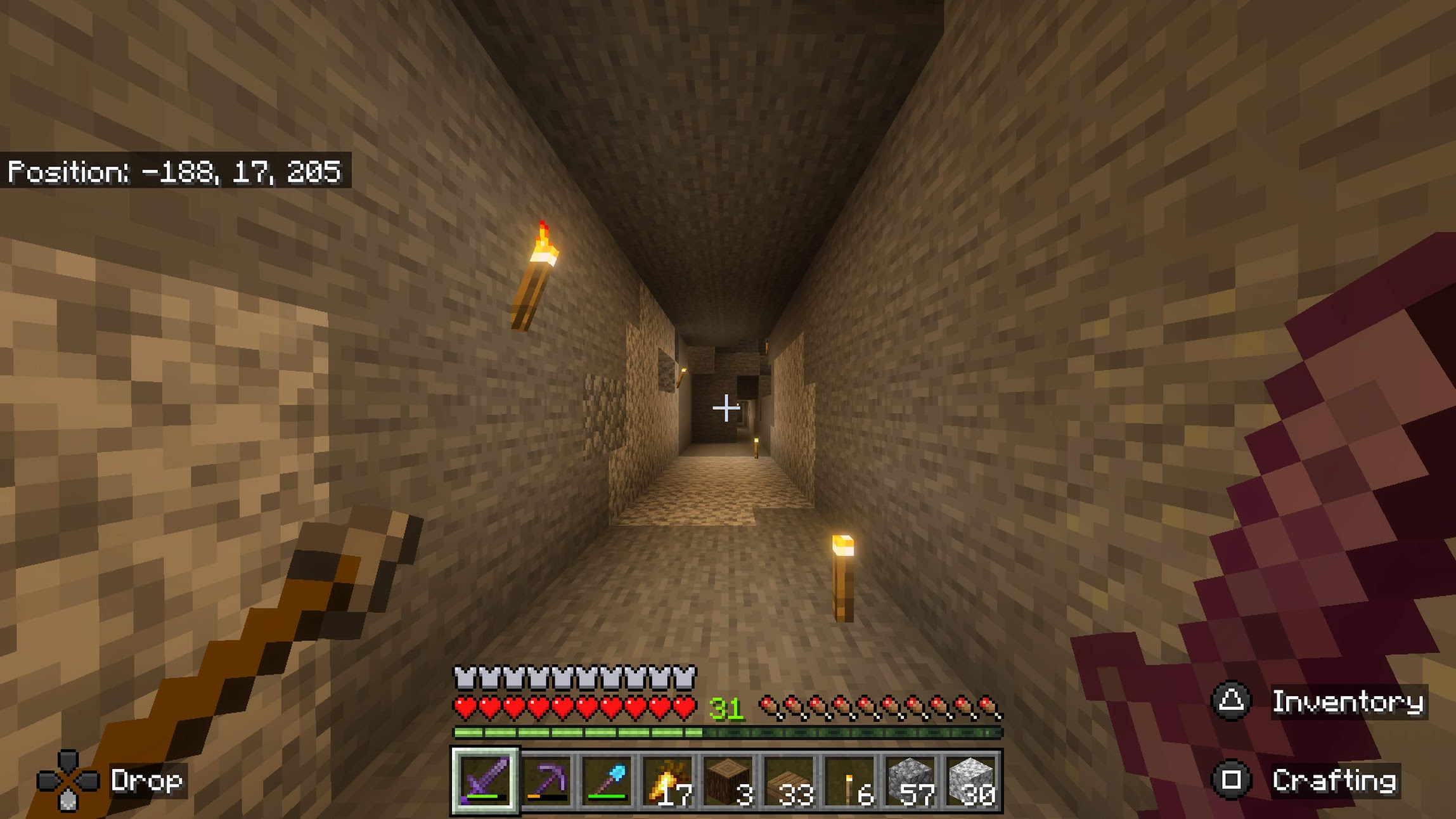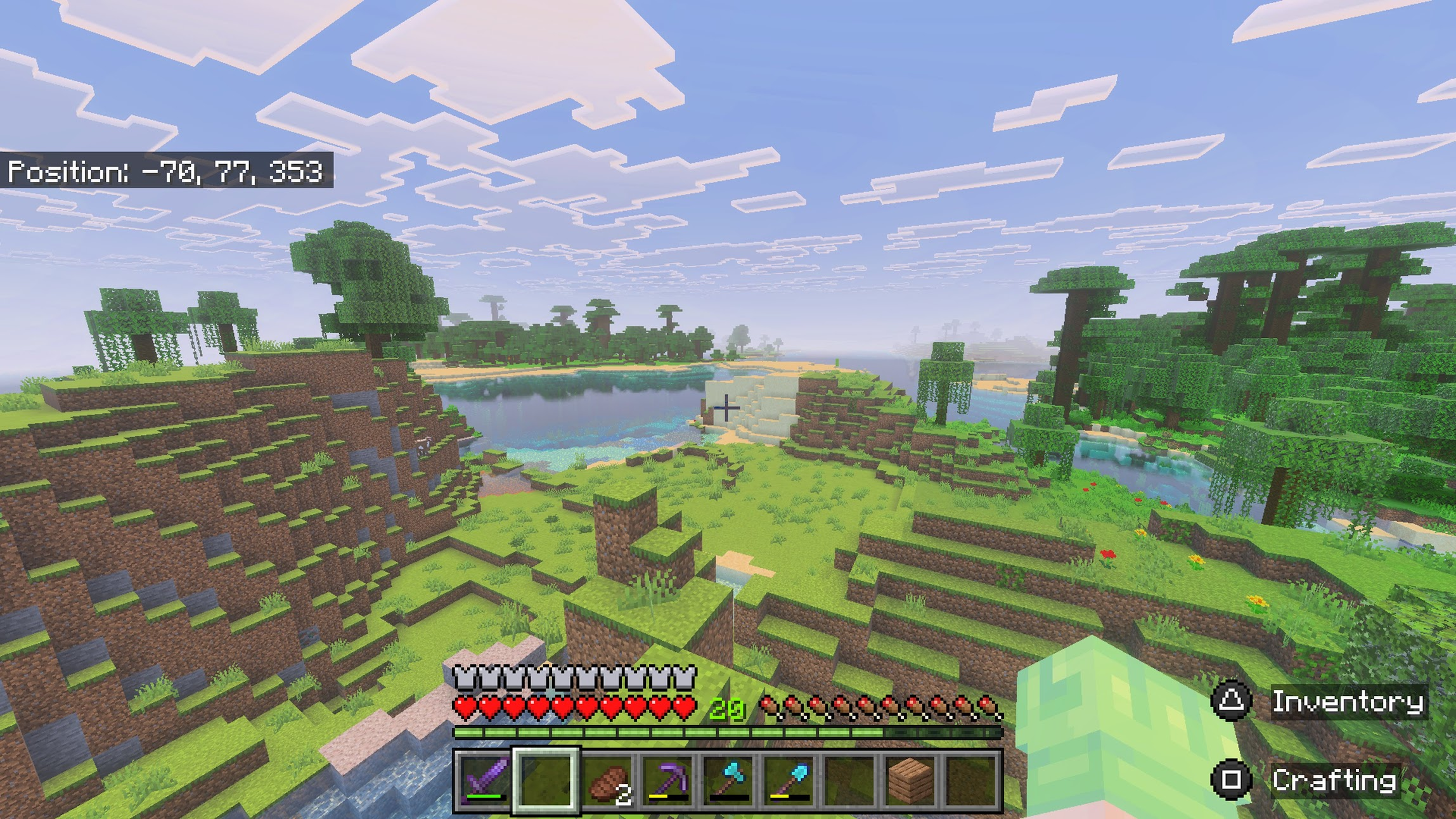minecraft
Movement & Navigation
Running
Sprint-jumping is one of the fastest ways to travel on flat ground—but many players don’t use it to its full potential. The typical method is to hold the jump key continuously while sprinting, which works, but isn’t optimal.
For better results, time each jump manually: press the jump key just as your feet hit the ground. This rhythmic timing allows you to outrun players who are simply holding down the button.
With practice, this technique becomes muscle memory. In PvP chases, it can make the difference between catching up and falling behind.
Q: Why does this work?
A: No idea. Best guess is less friction.
Swimming
Sprint-swimming is a valuable way to move quickly across and through water. To travel at high speed while staying on the surface, angle your camera slightly downward so you’re just below the waterline, then hold the jump key. This maintains full sprint-swimming speed without dipping too deep - and you’ll continue to breathe normally.
To dive quickly, look directly down and hold the crouch key. To ascend rapidly, look straight up and hold jump. These simple orientation-based controls help you move fluidly through water and avoid slow, clumsy swimming mechanics.
Co-ordinates
Coordinates can be enabled from the “Game” settings menu, and they display your exact position in the world using three values: X (east–west), Y (height), and Z (north–south). This system is incredibly useful for navigation, sharing locations with others, or traveling to coordinates you’ve been given.

To navigate using coordinates:
- Pick a direction and begin walking.
- Watch how your X or Z value changes - this tells you which direction you’re moving.
- If the value is moving away from your goal, turn around and head the opposite way.
- To reach a destination, adjust your path so that your X and Z values steadily approach the target.
- Once one value matches, shift your path to correct the other—minimizing changes to the one you’ve already aligned.
With a bit of practice, this method makes long-distance travel straightforward and efficient - even without a compass or landmarks.
Caving
Getting lost in cave systems is a common challenge in Minecraft, especially during long mining or exploration sessions. While some players try to navigate by memory, a more reliable approach is to leave a visual trail as you go.

One of the simplest and most effective methods is to place torches consistently on the left-hand wall as you explore deeper. This creates a natural breadcrumb trail. When it’s time to leave, just follow the torches keeping them on your right-hand side.
This method works well even in complex tunnels and helps prevent disorientation - no maps or extra markers needed.
Q: What do I do if I need to light the right hand side of a cave?
A: Put the torches on the floor.
Pathfinding

When traveling long distances, your speed depends heavily on the route you take—and what tools or resources you have available. Different terrain types and biomes offer different movement efficiencies:
- Boating is the fastest option across water. If you have a boat, rivers, oceans, and lakes often make excellent highways.
- Sprint-jumping is your next best alternative on land - faster than swimming and ideal for flat terrain.
- Swimming is slower than both, so only consider it if the water offers a direct route and you’re without a boat.
Low-lying areas near water tend to be flatter, making them a solid land-based option when boats aren’t available. However, some biomes are best avoided:
- Dense forests (like oak, birch, or jungle) slow you down due to underbrush and tree trunks.
- Steep mountains are difficult to climb quickly and often force detours.
Q: What about horses?
A: Horses excel on uneven land and can navigate steep areas well. However, without a lead, they can’t cross deep water, which limits route flexibility.